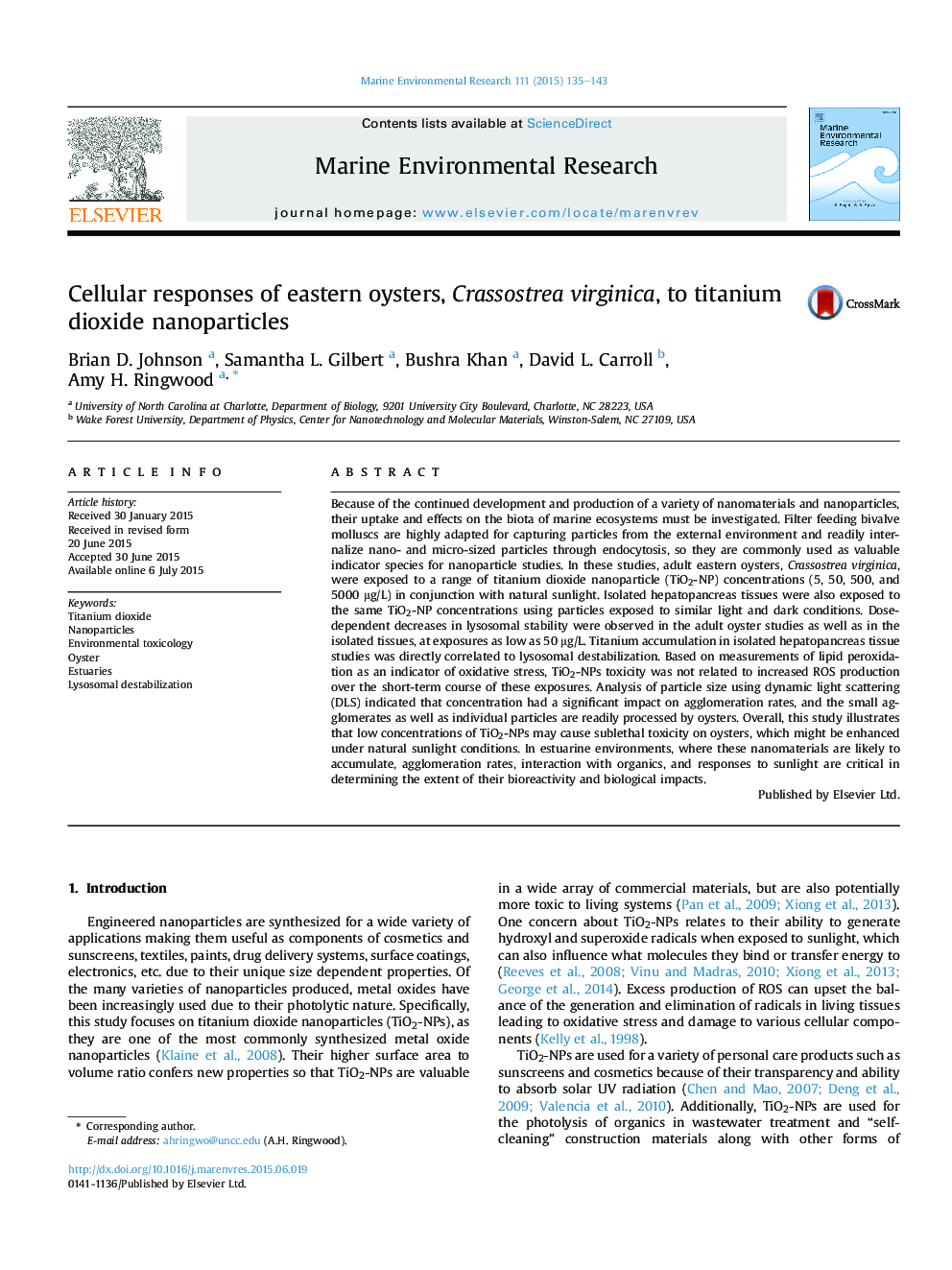| کد مقاله | کد نشریه | سال انتشار | مقاله انگلیسی | نسخه تمام متن |
|---|---|---|---|---|
| 4550679 | 1627571 | 2015 | 9 صفحه PDF | دانلود رایگان |

• Lysosomal stability and lipid peroxidation indicated moderate toxicity of TiO2-NPs.
• Potential TiO2-NP toxicity was observed as low as 50 μg/L.
• Similar observed trends, suggest in vitro as valuable for environmental screening.
• Agglomeration rates were dependent on concentration and not on sunlight exposure.
Because of the continued development and production of a variety of nanomaterials and nanoparticles, their uptake and effects on the biota of marine ecosystems must be investigated. Filter feeding bivalve molluscs are highly adapted for capturing particles from the external environment and readily internalize nano- and micro-sized particles through endocytosis, so they are commonly used as valuable indicator species for nanoparticle studies. In these studies, adult eastern oysters, Crassostrea virginica, were exposed to a range of titanium dioxide nanoparticle (TiO2-NP) concentrations (5, 50, 500, and 5000 μg/L) in conjunction with natural sunlight. Isolated hepatopancreas tissues were also exposed to the same TiO2-NP concentrations using particles exposed to similar light and dark conditions. Dose-dependent decreases in lysosomal stability were observed in the adult oyster studies as well as in the isolated tissues, at exposures as low as 50 μg/L. Titanium accumulation in isolated hepatopancreas tissue studies was directly correlated to lysosomal destabilization. Based on measurements of lipid peroxidation as an indicator of oxidative stress, TiO2-NPs toxicity was not related to increased ROS production over the short-term course of these exposures. Analysis of particle size using dynamic light scattering (DLS) indicated that concentration had a significant impact on agglomeration rates, and the small agglomerates as well as individual particles are readily processed by oysters. Overall, this study illustrates that low concentrations of TiO2-NPs may cause sublethal toxicity on oysters, which might be enhanced under natural sunlight conditions. In estuarine environments, where these nanomaterials are likely to accumulate, agglomeration rates, interaction with organics, and responses to sunlight are critical in determining the extent of their bioreactivity and biological impacts.
Journal: Marine Environmental Research - Volume 111, October 2015, Pages 135–143